I talk to people. A lot. And I find out that a huge majority of the Truth or Consequences locals and visitors alike are unaware of what lies beyond the city limits. Our town is amazing but there’s more to experience after soaking, shopping, and dining. My husband and I love to explore, especially locally, and enjoy the unsung places, backroads, small towns, offbeat sites. The goal today was to check off a spot on my New Mexico bucket list: the Fred Harvey House in Belen. But of course we couldn’t pass up a visit to our favorite places as well as a few new ones along the way.
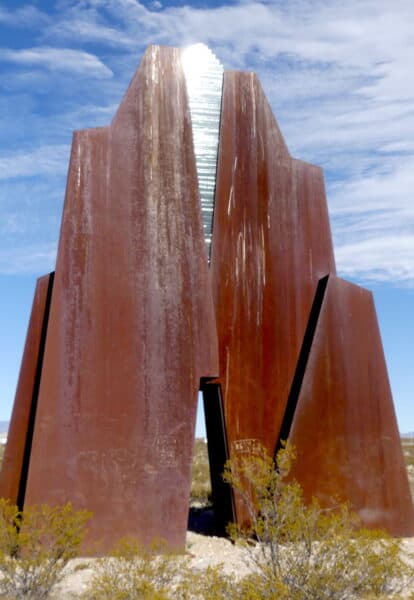
Heading north from T or C on I-25 we decided first to check out the tall edifice behind the rest stop at exit 115. Until now we had no idea it was a sculpture memorializing the Camino Real (the Royal Road). I’ve noticed it every time I’ve passed here but today it was on the list to see up close. The 40-foot-tall steel and glass sculpture lies within easy walking distance from the rest stop or you can get off the exit and backtrack 1.5 miles to the paved road that runs next to it. About 2.5 miles farther along the road is what remains of the building and grounds for the Camino Real visitor center.
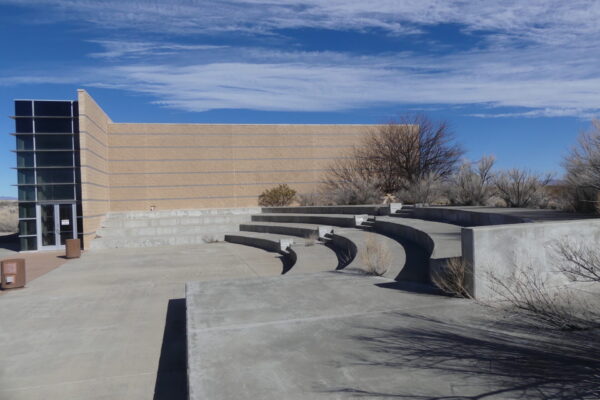
The Camino was a 1,200-mile travelway between Mexico and Santa Fe, serving as New Mexico’s lifeline with Mexico for 223 years before it was finally recognized in 2000 as a National Historic Trail. The visitor center is closed, reportedly because of lack of funding and stands isolated and unvisited. Sadly there are no signs of it reopening.
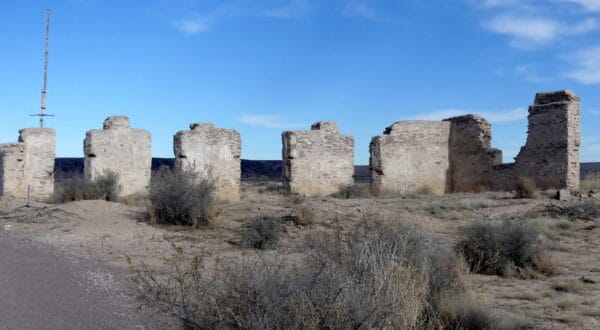
Fort Craig, also exit 115, was next on the list. I’m not a Civil War buff but can appreciate New Mexico’s involvement in this war and how it affected the state. Forts were established along a number of trails that crossed the New Mexico Territory, their purpose to protect travelers and settlers. Fort Craig, established in 1854, was one of eight situated along the Camino Real and the center of the largest Civil War battle in the Southwest. On February 21, 1862, the Battle of Valverde took place upstream from Fort Craig at Valverde Crossing. It involved thousands of Union and Confederate troops, many of them Buffalo Soldiers and New Mexico volunteers under the command of Kit Carson.
After the Civil War, troops focused on controlling Native American raids, and in a couple decades the valley prospered under the fort’s protection. By 1885 Fort Craig had outlived its use and was permanently abandoned; it has been listed on the National Register of Historic Places. If you’re lucky, you might find the fort’s host onsite to give you a detailed history. There’s a very nice walking interpretive trail through the ruins that’s always accessible, and the visitor center is open 8 to 5 Thursday through Monday. There’s a lot of history to soak up here, so take your time.
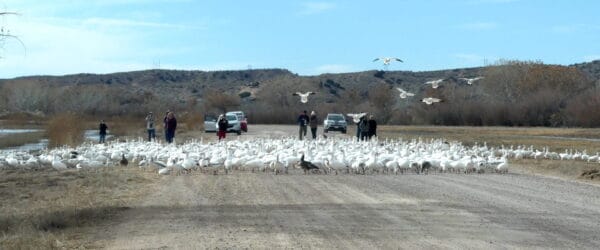
Next you’ll come to Bosque del Apache NWR (see the complete article “A Refuge for All” by Steve Morgan, Nov. 5, 2022 in the Sierra County Citizen), the holy grail for birders, especially in November during the week-long crane festival. Turkeys, sandhill cranes, javelinas, roadrunners, bobcats, and of course waterfowl including thousands of snow geese are winter residents; spring and summer host many passerines and raptors. Almost without exception, every trip we take north includes at least one go-through at the refuge. Admission is $5, free with the America the Beautiful national park senior pass.
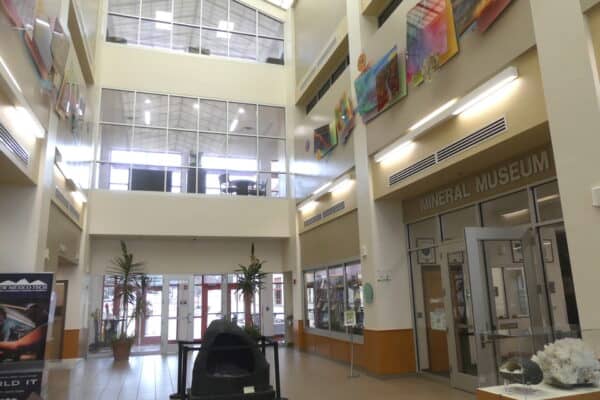
Mineral Museum, New Mexico Tech campus. This gem is often passed by, and even regular travelers on the interstate don’t know it’s here. Full-sized billboards along I-25 advertising this Socorro treasure have been replaced with low-impact 2-by-2-foot signs a few feet from the ground, but small signs reap big rewards. New Mexico Tech’s campus hosts this rock-lover’s dream that has been designated a world-class facility and certainly the best in the United States. Cries of “Oooh, look at this one, Ooh lookit this one, lookit THIS one, OMG look at this one, Lookit” were tolerated only for the first 5 minutes, then my husband rolled his eyes and went his own way.
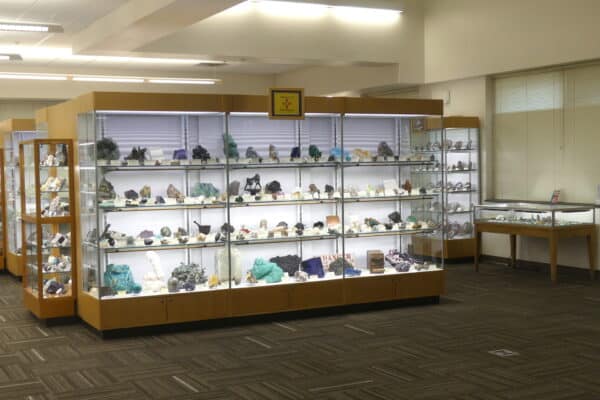
Director John Rakovan describes U.S. museum levels, with the Smithsonian as level 1 and New Mexico Tech as level 3, where it ranks as number one. Housing more than 15,000 specimens and historical mining artifacts, you can ooh and aah like I did, and still do, for several hours. But first a little history: When the school was established in 1888, its charter mandated a “mineral cabinet,” which is exactly what it sounds like: a cabinet full of minerals meant for educational purposes for the engineers and geologists who worked in the local mines. In 1905 the museum was established and quickly boasted the best assemblage of New Mexican minerals in the world. The collection won gold medals at the St Louis World’s fair in 1904, then later in 1915 at the Panama-California Exposition.
But in 1928, fire took out the entire collection of its then nearly 3,000 specimens. You might wonder how rocks could burn, but they did, and almost everything was lost. Ten years later, through donations and purchases, the museum was once again a showplace for gems, minerals, and history. A new building was erected in 2015, along with a stop-worthy gift shop and visitor center.
Today the many labeled display cases are filled with Minerals of New Mexico, New Mexico Turquoise, Lapidary Art, Geodes and Agates, Petrified Wood, and Meteorites, and that doesn’t include the cases filled with specimens from around the world. Collections include minerals, of course, as well as fossils, gemstones, and mining artifacts. And no mineral museum would be complete without a darkroom, where you can turn on the black light to see the luminescent rocks at their best.

Several cases have minerals available for purchase and just across the hall from the displays is the gift shop chock-full of geology-related items: books for adults and kids alike, T-shirts, maps, and more. The museum is open every day and admission is free, although donations are happily accepted. You can spend a few minutes or a few hours. Don’t miss it.
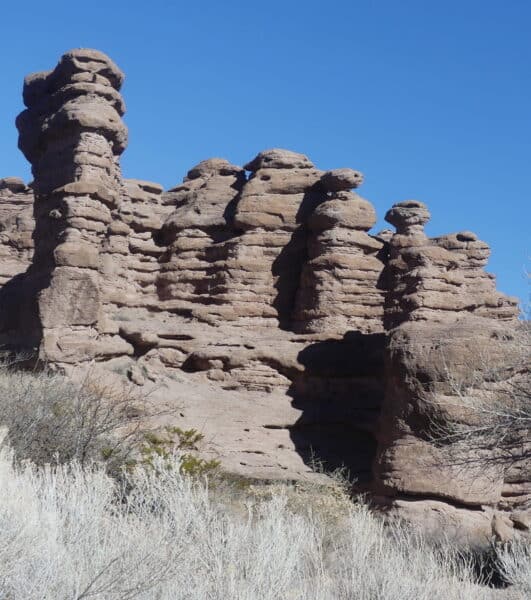
San Lorenzo Canyon. Just 5 miles north of Socorro is the exit for Lemitar (exit 156), where you can catch the frontage road to San Lorenzo Canyon, about 6.5 miles from the exit. It’s a good, passable, although washboardy at times, road that takes you through a huge wash into a pretty canyon, complete with hoodoos and assorted outcroppings. Along the way are marked hiking trails and a smattering of interpretive signs. It’s a great place for a picnic and hike but pay attention to the weather—you don’t want to be caught in the wash during rain.
Sevilleta NWR. Unlike Bosque there’s no auto drive here, but a very nice visitor center, hiking trails, and knowledgeable staff make it worth a stop. The usual desert species should be on hand any time of year. The visitor center has exhibits on the biological, geological, and cultural history of the refuge. Hike one of the trails to experience Sevilleta’s vistas and wildlife.
Fred Harvey House, Belen. I include Harvey House because I’ve always been interested in Fred Harvey, from collecting postcards with his name and logo to finding a book on the Harvey Girls at a yard sale. I was amazed at the beautiful building that awaited this Harvey-ite in Belen. Ring the bell and a docent will appear to give you a tour if you want. I was the only one there at the moment so got a great private tour, free but donation of $5 is most welcomed.
In 1875 Fred Harvey approached the Atchison, Topeka, and Santa Fe Railroad to establish eating houses and hotels along the railway’s routes, with an emphasis on quality and service. Service at a Harvey House meant courtesy as well as a speedy in and out—Harvey Houses had no bathrooms and passengers had only 30 minutes when they disembarked, so they used the bathrooms on the trains.
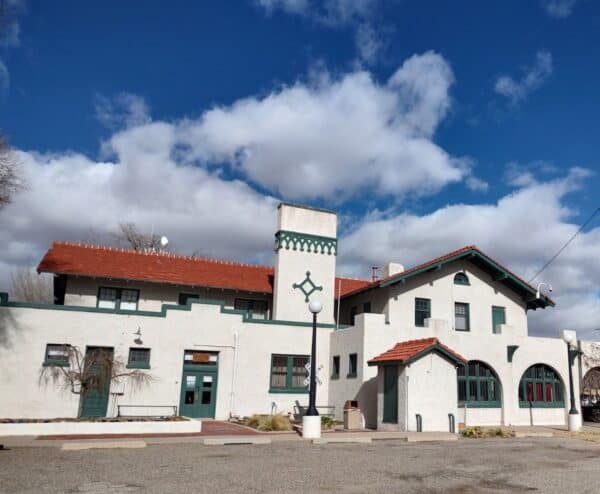
The Belen house was built in 1901, and even though it’s within spitting distance of the railroad tracks, the many trains that rumble by every day have not affected the building’s structural integrity. In New Mexico alone there were 18 Harvey houses, employing the soon to become famously known Harvey Girls, who set the standard for near perfect customer service. Our tour guide noted that each girl had to adhere to a strict curfew, wear no makeup, and have every hair in place, and if she got so much as a spot on her apron, she had to change.
Harvey House meals were tasty, ample, and affordable. Our guide noted that there are hard plans to open a restaurant in the building by April or May, in what I deemed to be the most pleasant room ever to dine in. We’ll go back.
We think nothing of driving a couple hours just for breakfast, so the 2-hour drive to Belen was an easy day trip for us. But go at your own pace. These are highlights and by no means a complete list of sites or thorough descriptions—each site has so much more to offer. If you want to explore a bit farther, there’s the Quebradas backway, VLA (Very Large Array; the gravel route 52 from VLA back to the Interstate is beautiful), San Miguel Church in Socorro (pick up a brochure of walking tours of the city), the three Salinas Pueblo Missions (Abo, Quarai, and Gran Quivira), Trinity site—or find your own. Get lost!
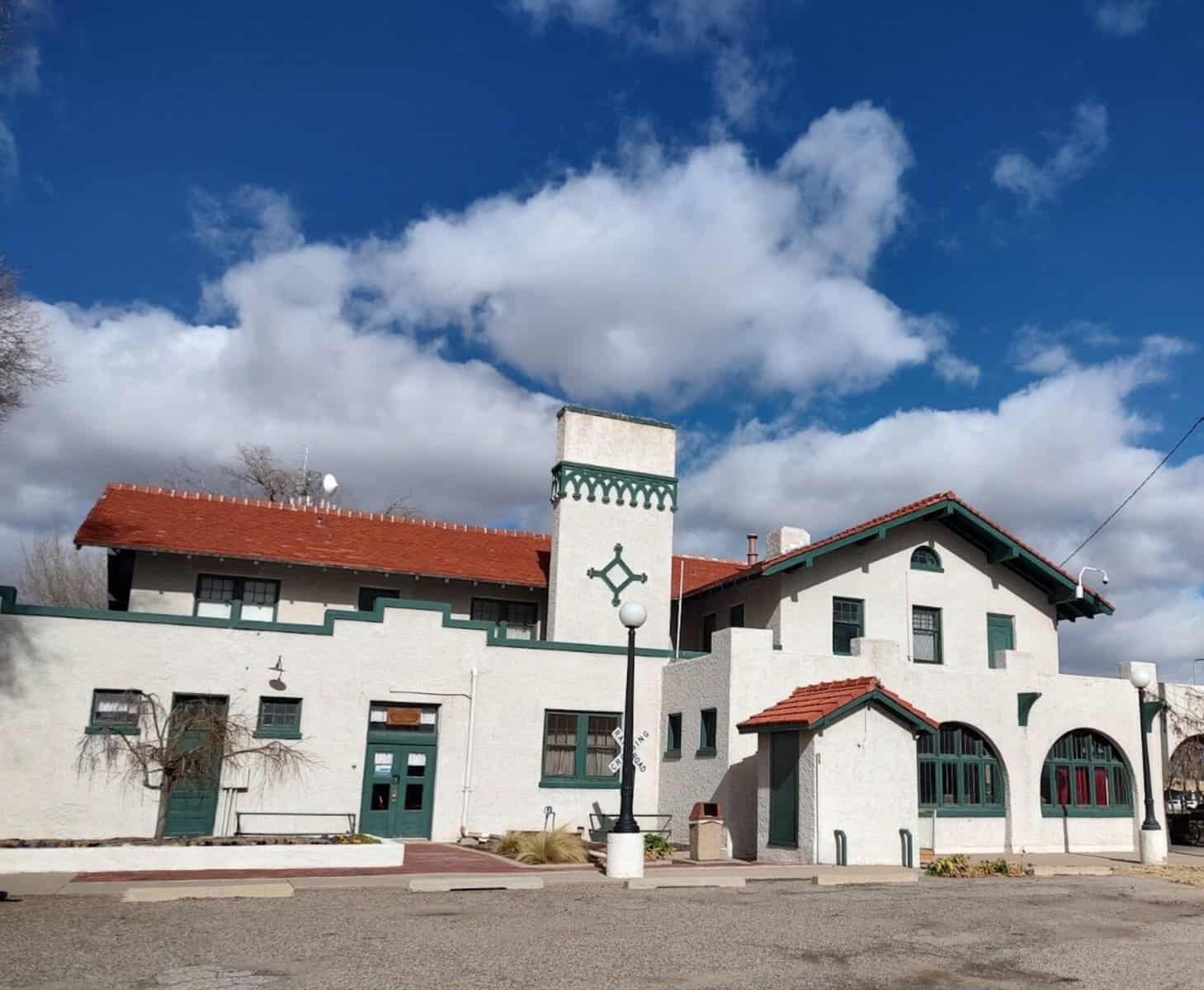

Thanks for such a helpful article. More places to see have just been added to my bucket list!